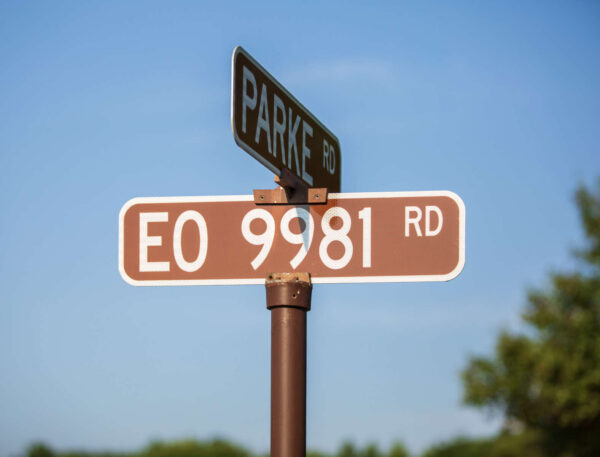
Fort Belvoir’s Lee Road is officially being renamed EO 9981 Road in a ceremony this morning (Wednesday).
The name change comes as a result of a 2022 recommendation made by the Congress-backed Naming Commission tasked with coming up with a plan to remove names, symbols, displays, and monuments that honor the Confederacy from all “Army assets.” That includes bases and roads.
Lee Road in Fort Belvoir, a U.S. Army installation, is named after Confederate General Robert E. Lee. But that will officially change when the road gets renamed after Executive Order 9981.
The order integrated the armed services and was signed into law by President Truman on July 26, 1948 — exactly 75 years ago to the day.
“The impact of EO 9981 cannot be overstated,” Fort Belvoir spokesperson Paul Lara told FFXnow. “By removing barriers based on race and fostering a merit-based system, it opened doors for countless men and women, regardless of their racial or ethnic background, to serve their country with dignity, honor, and equal opportunities. It set a powerful precedent for future civil rights advancements within the United States and inspired similar reforms in other sectors of society.”
The public ceremony will start at 10 a.m. today at Woodlawn Chapel (6050 Gorgas Road). Fairfax County Board of Supervisors Chairman Jeff McKay will present a proclamation recognizing EO 9981 to Col. Joseph Messina, who commands Fort Belvoir.
The ceremony will also include remarks from author and retired judge Rohulamin Quander, who is a descendant of enslaved servants under George Washington. The event will conclude with the unveiling of the new sign and refreshments.
While the recent effort to rename nine Army bases has gotten most of the attention, roads and buildings are also part of the directive. In the instance of Lee Road, Lara says the decision on the new name was left to Fort Belvoir leadership.
Leadership went with EO 9981 Road because of the order’s significance and because a concept was preferable to a person or place, which would have required significantly more vetting and approvals from the Secretary of the Army, Lara said. A concept, though, allows the renaming to happen quicker.
This won’t be the only Fort Belvoir road that will be renamed. Beauregard Road, Stuart Road, and Johnston Road are also slated for a change, per Lara.
“The possible names are still being decided, but we wanted to act on the 75th anniversary of the Executive Order for this first rededication,” Lara said.
As for Fort Belvoir itself, that name looks to be sticking around, despite ties to the plantation that once stood on the property and its history as the site of Confederate Memorial Day celebrations.
In a final report released last year, the Defense Department Naming Commission noted that it didn’t have the authority to move forward on the renaming of Fort Belvoir, but a change was recommended.
However, the Fairfax County History Commission expressed concerns with the report, citing a lack of transparency, potential historical inaccuracies, and the impact a change might have on telling the stories of enslaved people who lived on the plantation.
Lara confirmed there are “no current plans” at this time to rename Fort Belvoir.
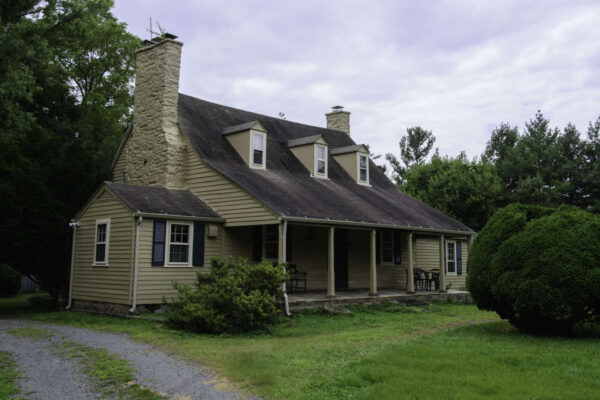
Fairfax County is beginning the process later this month of selecting the next inhabitants of the 238-year-old Mount Gilead property in Centreville.
The Fairfax County Parks Authority (FCPA) has scheduled a June 20 public Zoom meeting to discuss Mount Gilead’s inclusion in the county’s Resident Curator Program.
Under the program, the county leases out a historic property to a private citizen or nonprofit group who will occupy it long-term for free in exchange for an agreement to rehabilitate and maintain the property.
The June 20 meeting is an “introductory conversation” that will allow interested parties to get more information about what exactly the county is looking for in terms of a curator for the property, FCPA spokesperson Ben Boxer wrote FFXnow in an email.
In addition, on Saturday, June 24, there will be an in-person open house from 10 a.m. to 2 p.m. where members of the community and prospective applicants to the program can visit the property and ask questions.
Normally, Mount Gilead is only open to the public once a year during the annual Centreville Day celebration, which is being held on Oct. 14 this year.
While other properties in the program have been adapted into an adult day support center and a public park, only residential use applications will be considered for this particular property.
“Given the historical significance of this site, it was determined that residential use best befits the long-term goals of the property and the preservation of the historic integrity of the site,” Boxer told FFXnow.
Mount Gilead in Centreville was first built in 1785 as a combined residence and tavern. During the Civil War, it housed both Union and Confederate soldiers. Local lore says it was the headquarters for Confederate General Joseph E. Johnston, famed for being replaced by Robert E. Lee.
In the 1930s, ’50s, and ’60s, it underwent several notable remodelings that included additions. It has since been recorded on the Virginia Landmarks Survey, as well as in the 1969 Historic American Buildings Survey.
FCPA acquired the 6-acre property in 1996, but it has remained unoccupied ever since, with the county making continuous repairs over the last few decades.
While resident curators get to live on the property rent-free, they are responsible for all the costs associated with rehabilitation and maintenance.
A strictly-defined “treatment plan with respect to the preservation of the house itself” is determined by the county. This plan is “not open to definition by potential curators,” Boxer told FFXnow.
“Applications, including the proposed use and curator workplan, will be evaluated by a committee and to undergo a public comment period before a decision is made. The curator workplan and investment will be consistent with the requirements of the treatment plan,” Boxer continued.
Plus, the resident curator must also provide “reasonable” and “periodic” access to the public.
While there’s no timetable yet for when the county will select the next inhabitants for Mount Gilead, it did take close to four years from when plans were first submitted to new occupants moving into Herndon’s Ellmore Farmhouse.

Spy Robert Hanssen, a former Vienna resident who passed along secrets to the Soviet Union and Russia via a nearby park, died yesterday (Monday) in a Colorado federal prison.
Hanssen, 79, was an FBI counterintelligence agent who was sentenced to life in prison in 2002 for passing classified information to Soviet (later Russian) intelligence.
Hanssen was found unresponsive in his cell yesterday and pronounced dead later that day. AP reported that he is believed to have died of natural causes.
Hanssen used Foxstone Park in Vienna as a dead drop location for passing along classified information. He was arrested at the park in February 2001.
According to the Fairfax County Park Authority, Hanssen sold classified secrets on at least 20 different occasions over 15 years.
At the time of his arrest, Hanssen was caught leaving a package underneath a park bridge. The bridge was discovered to have been a site for several “dead drops,” or exchanges of confidential information. In June 2001, Hanssen pleaded guilty to 15 espionage-related charges. He was sentenced in May 2002 to life in prison without parole. He was sent to the supermax unit of the U.S. federal prison in Florence, Colorado, to begin serving his sentence.
Hanssen’s actions were later dramatized in the movie “Breach,” which filmed some scenes at Foxstone Park.

The work of Reston’s master planner James Rossant is on display at George Mason University through June 30.
The exhibit, “Cities and Memory: The Visionary Architecture of James Rossant with Poetry by Juliette Rossant,” displays the work of Rossant alongside poems that reflect on his art by his daughter, Juliette Rossant.
Rossant, who died in 2009, was an architect involved in the New Towns movements in the U.S., which sought to address issues related to urban overcrowding, air pollution and decay.
Rossant and his partner, William Conklin, developed the master plan for Reston in the early 1960s in an effort to create a suburban community that harmonized with urban amenities in park-like settings, according to GMU.
“Rossant’s plan proposed an organic mix of housing types and densities, green spaces, public sculpture, and mixed-use buildings, along with cultural facilities, schools, and churches,” the exhibit organizers said in a press release. “He believed that architecture could — should — be both beautiful and serve to build a better society.”
The exhibit features work from 1972 to 2009. Here’s more from the university on the exhibit:
The artworks in this exhibit range from 1972 to 2008 and give us insight into Rossant’s prodigious imagination and the fantastical processes that underpin his subsequent architectural creations. His subjects vary widely, from modernist portraits to imaginary cities to pastoral landscapes. Uniting them is Rossant’s deep commitment to realizing utopian ideals and visions. As described by architectural critic Joseph Giovannini, James Rossant’s drawings “fly off the grid, off the wagon of rationality, into a surrealism and humor of imagination liberated from the right angle and architectural propriety. […] These are temperamentally joyous drawings, propelled by curiosity and a spirit of exploration.”
His daughter’s poems act as responses to her father’s paintings. Her book — “Planet of the Blue Flowers” — will be published later this year by Finishing Line Press.
The work will be on display in Mason’s Fenwick Gallery during Fenwick Library’s business hours. The Conklin Rossant firm donated the Reston architect’s work to the University’s Special Collections Research Center.
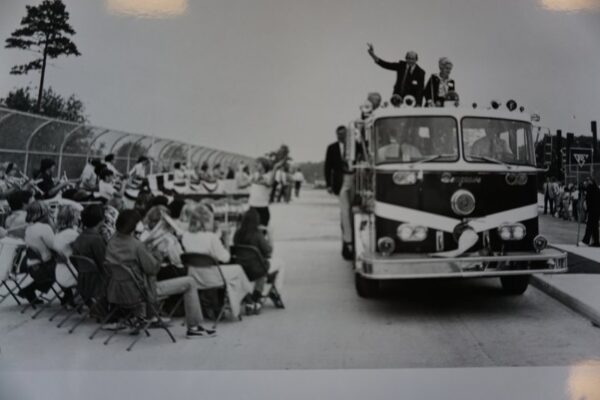
Reston Museum will take a deep dive into the history behind street names, Reston’s transportation system and the road to accessibility at a special event on May 10.
Called “This Way to Reston,” the program will kick off at 7 p.m. at Reston Community Center Lake Anne. Although the program is free, registration is required. Programming is supported in part by RCC.
Presenters will include museum board member Caren Anton, a museum board member; Mike McDermott, chair of Reston Association’s Multimodal Transportation Advisory Committee; and Colin Mills, project director of the Reston Accessibility Committee.
Reston Museum Executive Director Alexandra Campbell noted that transportation has played a major role in Reston’s history, influencing the community’s master plan in 1962, community volunteerism, and the area’s live, work, and play philosophy.
“We look forward to sharing historical photographs of this history and learning from Mr. McDermott and Mr. Mills on the Reston modes of transportation today,” Campbell wrote in a statement.
The event comes as Reston’s master plan undergoes a major revision. Fairfax County is expected to release a staff report of its recommendations on a draft master plan update sometime this month.
When Vienna Elementary School celebrates its 150th anniversary next month, the occasion will double as a milestone for the entire Fairfax County Public Schools system.
Opened in 1923, the 74,904-square-foot home of the Vikings at 128 Center Street South is the oldest continuously operating public school building in the county, though the school as an institution can trace its origins back to the founding of FCPS in 1870.
“Vienna was one of the first three or four schools that began FCPS,” Vienna Elementary principal John Carmichael said. “So, while we’re celebrating Vienna’s birthday, it’s really Fairfax County Public Schools’ birthday as well.”
Vienna Elementary School will commemorate its sesquicentennial by hosting a birthday party on May 19 to excite the 381 students who currently fill its halls, complete with cake, games, music and food from Vienna Inn.
Carmichael and other school administrators have been planning for the celebration for about a year now. Around Thanksgiving, they brought current and former parents of students into the fold by convening a committee to help organize and promote the event.
While there will be speeches reflecting on the school’s history, including recognition of its segregated beginnings, the organizers want to keep the proceedings fun and engaging for all students, from kindergarteners to sixth graders, Carmichael told FFXnow.
Aside from the president of the school’s student council association, a sixth-grader who will comment on her time at the school, kids will be able to savor the treats and games free of any obligations.
“We want the students to be able to enjoy and, just as they would in a birthday, get to play games, activities, have cake and eat food,” he said, noting that some students have asked if he remembers what it was like when the school first opened.
Though he does “have the white hair,” he quipped, Carmichael’s memories don’t stretch back quite that far.
Vienna Elementary cites 1872 as its founding year, since that’s when the original school building on its current site opened. However, that location was preceded by one on Park Street between Church Street and Maple Avenue that was established for white students only in 1870 after Virginia passed the Public Free Schools Act.
“Two segregated schools operated in Vienna during those early years,” Jeff Clark, an FCPS spokesperson and unofficial resident historian, said. “The Vienna ‘Colored’ School, as it was called in historic records, for Black children, operated out of a church on Lawyers Road until a one-room schoolhouse was constructed in the 1890s.”
The “colored” school later became Louise Archer Elementary School, whose first principal will soon be honored with a historical marker.
The existing Vienna Elementary School building was the fourth one on the Center Street site. Preceded by a four-room school that burned down in 1919, the facility was built in 1922 and consisted of eight classrooms and an auditorium before expanding with subsequent additions and renovations — most recently in 2010, per the FCPS capital improvement program.
The school remained segregated until 1965, when FCPS finally integrated schools system-wide.
Carmichael says he plans to acknowledge that history in his opening remarks at next month’s celebration. Other attendees will include Superintendent Dr. Michelle Reid, Providence District School Board Representative Karl Frisch, and Hunter Mill District Supervisor Walter Alcorn.
A Facebook page has been set up so people can RSVP to the event. Anyone who attended Vienna Elementary or is otherwise connected to the school is welcome to stop by, Carmichael says.
“We’re trying to just bring anybody that may have gone to the school in the past,” he said. “If they’re able to come, they’re more than welcome to join, because at the end of the day, a school is really just a family. It’s a community.”
Photo via Google Maps
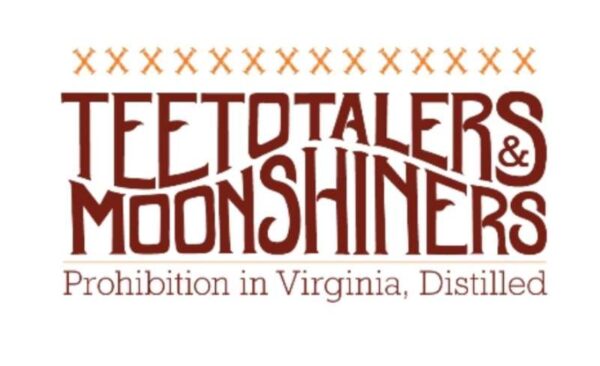
A traveling exhibition looking at the ins and outs of Prohibition in Virginia is coming this month to Reston Museum.
The Library of Virginia’s Teetotalers & Moonshiners exhibit will be on view between tomorrow (March 21) and April 29. Reston Museum will also showcase artifacts from its own collection of Bowman Distillery items.
The exhibition tells the story of Virginia’s Prohibition, including its history as part of a social reform movement, the economic and social costs of Prohibition and the role of government in overseeing public health.
Here’s from Reston Museum on the exhibit:
Distilled from the Library’s 1,200 square foot exhibition (on view through December 5, 2017), Teetotalers & Moonshiners uses the Library’s deep and compelling collections on this era, from humorous sheet music mocking the absurdities of Prohibition to blazing headlines in anti- and pro-liquor newspapers and broadsides. At the core of the story are the records of the state’s Prohibition Commission, which record the daily activities of its agents. A digital interactive component documents statewide prohibition trends and tells the personal stories of commission agents, bootleggers, and moonshiners. The exhibition is supported in part by the Virginia Department of Alcoholic Beverage Control and the National Alcoholic Beverage Control Association. The Virginia Distillers Association provided support for the traveling exhibition.
Teetotalers & Moonshiners addresses the important and long-lasting effects of Prohibition on Virginia and America, including the prohibition movement as part of a social reform movement, the economic and social costs of Prohibition, including the closing of businesses and conflict within communities, and the rise of illegal alcohol production and sale as an underground culture and economy, the role of government in overseeing public health, and prohibition’s legacy–from NASCAR to the creation of the Virginia Department of Alcoholic Beverage Control to the rise of the modern brewing and distilling industry.
The Library of Virginia was founded in 1823 to preserve the state’s printed and manuscript holdings. The exhibit is made possible in part with support from Virginia ABC and the Virginia Distillers Association.
Located at Lake Anne Plaza (1639 Washington Plaza North), Reston Museum is a nonprofit organization that aims to preserve Reston’s past, inform its present and influence the future of Reston.
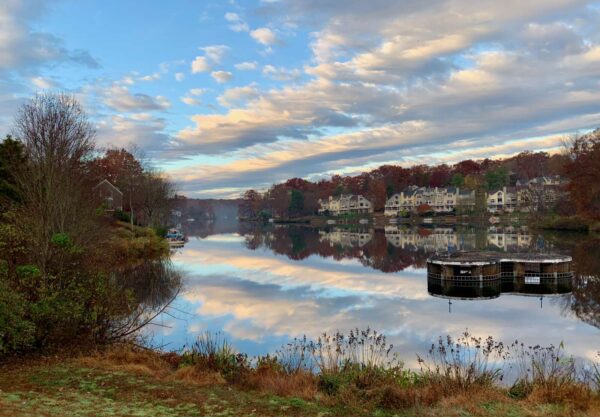
Updated at 4:05 p.m. — Yesterday’s meeting on a potential Lake Audubon renaming was suspended after 20 minutes due to a medical emergency. The meeting will be rescheduled, but an exact date hasn’t been determined yet, Reston Association spokesperson Mike Leone says.
Earlier: Months after floating the possibility of a name change for Lake Audubon, Reston Association is beginning initial conversations with the community.
RA planned to hold a meeting on the idea of renaming the lake yesterday (Thursday) at the Walker Nature Center.
The meeting was strictly intended to “explore community sentiment on whether to rename Lake Audubon,” RA spokesperson Mike Leone said.
Leone told FFXnow that the meeting focused on getting input from members in the area around the lake on the possibility of a name change.
“Currently, no other meetings or discussions are scheduled on the renaming,” Leone wrote in a statement.
RA’s Board of Directors first pitched the idea at a December meeting. The motion was suggested by at-large director John Farrell, who later announced that he is running in the state delegate race to succeed Ken Plum.
Farrell is also seeking to retain his seat on the RA board, which has an election now underway.
The lake is named after 19th century artist and known enslaver John James Audubon.
In October 2021, the Audubon Naturalist Society — a major D.C. area conservation group — said it will change its name due to the “pain” caused by Audubon. The organization is now called Nature Forward.
The National Audubon Society, however, voted earlier this week to keep its name, even as local chapters of the bird conservation nonprofit — including the one in D.C. — move to drop it.
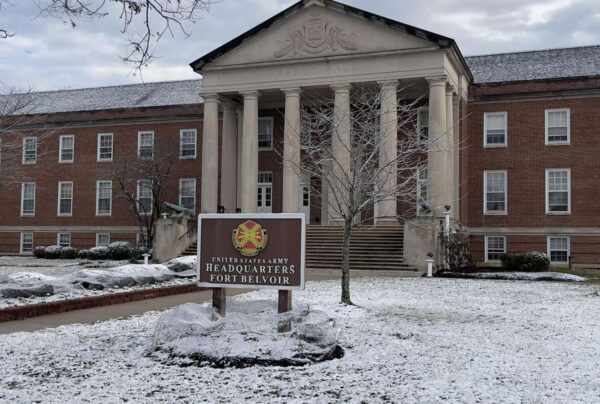
Fairfax County’s Board of Supervisors is no stranger to renaming things, from roads to magisterial districts. But now, the board is leading a push not to rename a site associated with slavery.
In a Board of Supervisors meeting on Tuesday (March 7), Mount Vernon District Supervisor Dan Storck raised the topic of Fort Belvoir’s potential renaming. The base is named for the Belvoir plantation that once occupied the site.
In a final report last year, a Department of Defense Naming Commission recommended that Fort Belvoir be renamed. According to the Association of the United States Army:
One final matter involves Fort Belvoir, Virginia, named for a plantation that once occupied the land. Belvoir has ties to the Confederacy but was not named in 1935 in direct commemoration of the South. The commission was not given authority to rename Fort Belvoir, which was previously known as Fort Humphries, but the commission believes it should have a new name. The report “strongly encourages” the defense secretary and Army secretary to review the history of the installation, noting it was the site of the celebration of Confederate Memorial Day.
While Fairfax County and other localities have routinely renamed locations, the Fairfax County History Commission expressed concerns about the Naming Commission’s report for a few reasons, from questions about historical inaccuracies to uncertainty about the effect on how Black history should be represented at the fort, according to Storck.
“Any action taken by the army should be transparent, based on evidence, and include local community and stakeholders,” Storck said. “Removing the name Belvoir may reduce the likelihood that these stories of the enslaved African Americans and free Black residents who lived on the base will be told.”
Storck proposed that the Board of Supervisors recommend the Fairfax County History Commission’s report be sent to the Secretary of the Army and the Naming Commission Historian voicing their concerns. The proposal was unanimously approved by the Board of Supervisors.
Board of Supervisors Chair Jeff McKay said concerns about the renaming came up in a recent meeting with the base commander. Whatever the ultimate decision is, McKay said the process around the name change should be more transparent and should involve Fairfax County.
“I had an opportunity to sit down with the base commander for quite some time and this was the subject of conversation,” McKay said. “I know it’s created a lot of angst for Fort Belvoir. I think it’s important as this consideration is being made — not by the county — but that county input is part of the decision process.”
A public affairs officer from Fort Belvoir told FFXnow that any consideration of renaming the base will be open and transparent and the Fort Belvoir leadership has already started moving forward on renaming four streets honoring Confederate leaders:
The Naming Commission encouraged the Secretary of Defense and the Secretary of the Army to review the relevant historical facts and consider renaming Fort Belvoir. The Army will begin an open and transparent process to consider renaming the installation.
The redesignation of Beauregard Road, Stuart Street, Lee Road, and Johnston Road fit within the legislative mandate of the Naming Commission. Fort Belvoir has already begun consulting with the local community, through the Fairfax County History Commission, to recommend name changes for the four streets currently named after Confederate leaders.
In October 2022, Secretary of Defense Lloyd J. Austin III concurred with all of the Naming Commission’s recommendations, including redesignating nine Army installations with names that are rooted in their local communities and that honor American heroes whose valor, courage, and patriotism exemplify the very best of the U.S. military.
Fort Belvoir is standing by to assist in that effort as requested.
Photo via Fort Belvoir/Facebook

Several locations linked to African American history in Fairfax County could be eligible to be designated as historic places.
Those buildings and neighborhoods include the Louise Archer School, the Tinner Hill neighborhood and Clifton Primitive Baptist Church. Along with other candidates, they appear in a draft African American Historic Resources Survey Report, which was released on Feb. 23.
The county is looking for residents to share their thoughts on the report ahead of its final version, anticipated late this spring.
“We’re looking for feedback on the historical context and properties as written in the report,” Leanna O’Donnell, planning division director at the Fairfax County Department of Planning and Development, wrote in a statement to FFXnow.
Residents who want to weigh in on the report can do so through Friday, March 24. There will also be a virtual community meeting on the report’s findings at 6:30 p.m. on Monday (March 6).
“Any feedback will be taken into consideration as we finalize the report and help identify properties that could be nominated for inclusion in Fairfax County’s Inventory of Historic Sites, the Virginia Landmarks Register or the National Register of Historic Places,” O’Donnell wrote.
The survey report furthers the work of the African American History Inventory, a database of resources related to the county’s African American culture and history. That inventory came to be following an October 2020 motion from a commissioner on the Fairfax County History Commission.
In 2021, the county received funding through the Virginia Department of Historic Resources’ Cost Share Grant Program to support the current study.
The report includes historical information about African Americans in present-day Fairfax County, starting in the 1600s. It also features photos and descriptions of buildings and communities surveyed, as well as preliminary recommendations.
For example, the entry on Louise Archer Elementary School includes a description of the building’s location, its exterior and the surrounding area of Vienna, along with pictures of the building and some historical context.
“The evolved building is the third purpose-built school for African Americans in Vienna,” the report says. “Once Fairfax County schools began to integrate, Louise Archer School was the only formerly Black elementary school to integrate and remain open.”
The report calls the school “a strong candidate for NRHP listing.”
Of the sites not already listed, Lane’s Mill in Centreville and Luther Jackson Middle School in Merrifield were deemed eligible for the national register. Other potential candidates include McLean’s Chesterbrook Baptist Church, Clifton Primitive Baptist Church, Quander Road School in Belle Haven, and the Tinner Hill neighborhood in Falls Church.
The Gum Springs area was the only part of the county excluded from the survey. That area is “part of a more intensive survey effort focusing specifically on this prominent African American community,” according to a county press release.
The county has also moved to honor Black and African American history with new historical markers, selected late last year.

